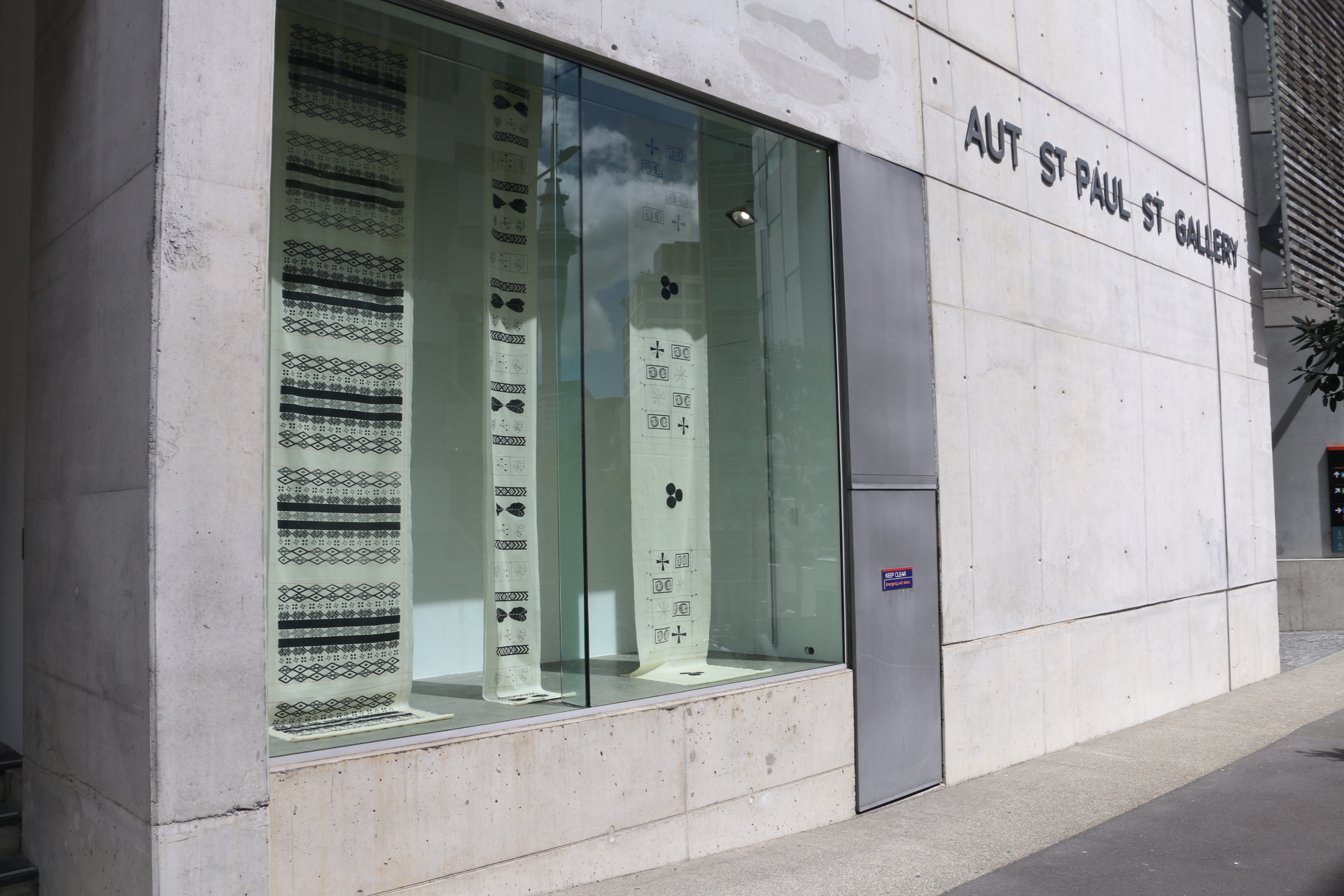Liuaki
‘Uhila Kanongata’a Nai
4 March 2022 - 25 March 2022
‘Uhila Kanongata’a Nai, Liuaki: Tokanga: Tala Tukufakaholo ‘oe ngoue’anga (2021). Pepa Koka’anga (vylene paper), ink.

‘Uhila Kanongata’a Nai, Liuaki: They were always Returning Home (2019-2020). Calico, Feta’aki (undyed barkcloth), Pepa Koka’anga (vylene paper), ink.
This project derives from a personal interpretation of lea mu’a (old sayings) and lea Faka-Tonga (the Tongan language), which are then translated into kupesi symbols to produce contemporary Tongan ngatu. The poetic Tongan term ‘liuaki’ informs this work and is interpreted as meaning ‘to go back; to be brought back’. It is paired with the term ‘liliu,’ which means to transform or to change. Together they signal complex relationships between ancestors which span generations, places, and times. My research utilises the visual language of ancient Tonga and today’s lea Faka-Tonga to emanate tala tukufakaholo with my family, a collection of knowledge about the history of hingoa fakafamili, tupu’anga, and manatu about my Nena and myself. This tala tukufakaholo tātānaki (collection) reflects the past tala tupu’a (myths or legends handed down from ancient times) and the space these ngatu occupy. It relates to the notion of learning through listening, observation and making with a focus on how this mode of practising can position itself in a contemporary space of artmaking.
These works utilise a variety of both contemporary and traditional natural materials which range from calico, pepa koka’anga (vylene paper), and feta’aki (undyed barkcloth). The pepa koka’anga is used across Tongatapu for making ngatu as it is less expensive compared to the feta’aki (undyed barkcloth), its use is similarly positioned in Aotearoa where natural materials are less easily sourced. In this exhibition you are able to see my process of making which experiments with printing on all three materials. Other materials traditionally used within the making process are sourced from the ‘ulu niu (coconut tree) which are; kavele’ipulu (coconut husk), la’i kaka (coconut fibre) and tu’aniu (coconut leaf mid-rib), paongo (pandanus leaves) and fau (hibiscus). These materials are particular to the methods and processes of traditional kupesi making which I have used as a point of departure, my equivalent method being the use of screen printing and ink. Similarly, the procedure of tauaki pe tautau (to hang so as to dry) informs the installation of my works in contemporary art spaces.
– ‘Uhila Kanongata’a Nai
‘Uhila Kanongata’a Nai is a Tongan New Zealand born artist, who emigrated to Tonga with her Nena (Grandmother), ‘Ana Va’inga Pautā in 1999 until the end of 2012, when Nai immigrated back to New Zealand at the age of 13. Nai grew up watching her Nena making ngatu (decorated bark cloth) and kupesi (embroidered stencil) in the small village of Pelehake on the East-Side of Tonga. She is currently enrolled in the PhD programme of the School of Art + Design, AUT, and is a researcher for the Vā Moana Research Cluster.
Liuaki: roomsheet
